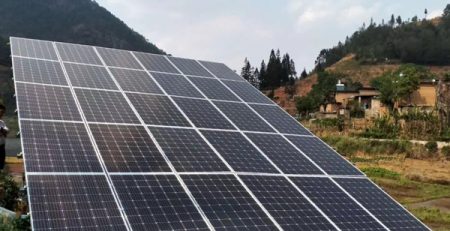WHAT IS A HALF-CELL SOLAR PANEL?
Panel trends have a way of quickly becoming mainstream. IHS Markit predicted that passivated emitter rear cells (PERC) technology would go from a blip in the market in 2014 to mainstream by 2020—a prediction confirmed by anyone looking at panel models released this year. PERC is here to stay.
The next technology on that mainstream path is half-cell designs. The ninth edition of the International Technology Roadmap for Photovoltaic (ITRPV) predicts the market share of half cells will grow from 5% in 2018 to nearly 40% in 2028.
Half-cell modules have solar cells that are cut in half, which improves the module’s performance and durability. Traditional 60- and 72-cell panels will have 120 and 144 half-cut cells, respectively. When solar cells are halved, their current is also halved, so resistive losses are lowered and the cells can produce a little more power. Smaller cells experience reduced mechanical stresses, so there is a decreased opportunity for cracking. Half-cell modules have higher output ratings and are more reliable than traditional panels.
Since half-cell designs are the hottest trend right now, a manufacturer just has to update a few things on its lines to keep up. The two challenges with switching full-cell manufacturing to half-cell designs is the cell cutting and the stringing process. Since half-cells are usually PERC cells to begin with, the cell itself is quite fragile. Laser-cutting the cell down the middle without cracking it is a delicate process. Half-cells often use four or more busbars. Stringing these very narrow connection strips across a smaller footprint requires the use of precise equipment. Junction boxes are also different on half-cell modules. Most brands use multiple, smaller junction boxes so each module half can function as its own. Otherwise, half-cell module assembly is like full-cell production.
Since half-cell modules produce more power and are more efficient and reliable than their full-cell counterparts, their use can lead to time and money savings for the installer.
“By delivering more power per square meter, fewer panels are required to generate the same power,” Seber said. “This means quicker installation times and the need for fewer components such as clamps and racks—all of which reduces the overall costs.”
MP can supply high efficiency 9BB perc half cell solar panel max power 430w. Please contact us for more details.



